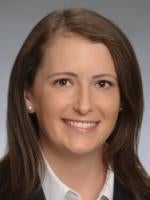Two recent announcements reflect that the U.S. Government is taking aggressive steps to address opioid abuse by identifying and targeting the involvement of medical professionals in facilitating opioid abuse involving Federal health care program beneficiaries. The U.S. Department of Justice announced on July 13, 2017 fraud charges involving 412 defendants in 41 federal districts across the country, including 115 doctors, nurses, and licensed professionals. In what the DOJ asserted was the “largest ever health care fraud enforcement action by the Medicare Fraud Strike Force,” DOJ alleged $1.3 billion in false billings were involved, and the enforcement action had a particular focus on medical professionals involved in the unlawful prescription and distribution of opioids. On a related matter, the Department of Health and Human Services (HHS) initiated payment suspension actions against 295 providers.
Attorney General Sessions attributed the action to tips from people in the affected communities and sophisticated computer programs utilized to identify outliers (i.e., datamining).
Data Brief Issued on Questionable Opioid Prescribing
Nearly simultaneously, the HHS Office of the Inspector General (OIG) issued a data brief entitled Opioids in Medicare Part D: Concerns About Extreme Use and Questionable Prescribing. The data brief, likely reflecting the computer programs that identify outliers referred to by Attorney General Sessions, recited data on opioid use and overuse in the Medicare Part D population.
The data brief noted that one in three Medicare Part D enrollees, or approximately 14.4 million beneficiaries, received at least one prescription opioid in 2016,* and one-tenth of the Part D beneficiaries received opioids on a regular basis. The data also showed that over 500,000 beneficiaries, excluding those in hospice care, received high doses of opioids, consisting of more than 120 mg/day over three months, which is in excess of the maximum daily level recommended by the Centers for Disease Control.
The OIG identified nearly 90,000 Medicare beneficiaries who are at serious risk of opioid abuse, because they either received extreme dosages of an opioid (more than 240 mg daily for 12 months, which is more than two and a half times the dose the CDC recommends) or appeared to be doctor shopping (received high amounts and had four or more prescribers and four or more pharmacies). The OIG also reported data showed beneficiaries receiving opioids from as many as 46 different prescribers from 20 different pharmacies in multiple states.
According to the OIG, such high use shows not only that the beneficiary may be addicted to opioids, but also there is a risk of diversion for resale.
Prescription patterns of various prescribers to the Medicare D population were also reported. OIG identified over 400 prescribers with “questionable prescribing patterns”; that is where they ordered opioids for those at high risk for abuse because of their extreme use or because of their apparent doctor shopping. OIG also identified that it has information on a smaller subset of prescribers with a high number of beneficiaries who received extreme amounts of opioids or who appeared to be doctor shopping.
OIG Continues to Focus on Opioid Abuse
OIG is focused on the issue of opioid abuse, and that, through information available as reflected in the data brief, it can readily identify Part D beneficiaries and their prescribers who have high or extreme usage of opioids or appear to be prescriber shopping. OIG indicates that, armed with this data, it will work with its law enforcement partners and CMS to follow up with identified prescribers. The DOJ enforcement action may well reflect this cooperation. In the report OIG specifically calls on “Part D sponsors to work with OIG and CMS to better combat opioid abuse in Medicare.”
A clear warning has been given to those prescribing or involved with heavy use of opioids through this data brief. Improved datamining makes prescribing patterns of individual practitioners relatively transparent, at least with respect to Federal healthcare beneficiaries. Combined with the DOJ reported enforcement action, it likely shows that medical professionals who are significant outliers in prescribing opioids to the Medicare population are likely to be viewed as potential targets for enforcement and that the Federal government is serious about pursuing whatever leads it has.
* The most commonly prescribed opioids were tramadol, hydrocodone and oxycodone.





 />i
/>i

